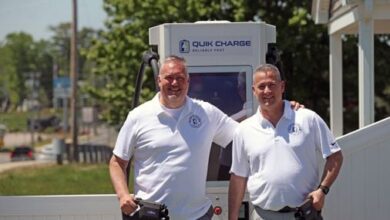Electric-vehicle startup Fisker files for bankruptcy

Fisker, a much-hyped startup that sought to mimic Tesla’s success, has filed for bankruptcy, roughly a year after releasing its first electric-vehicle model.
Fisker, a much-hyped startup that sought to mimic Tesla’s success, has filed for bankruptcy, roughly a year after releasing its first electric-vehicle model.
The filing marks the second time an automotive venture by car designer Henrik Fisker has gone bust and follows weeks of quietly winding down its operations.
Premium benefits
35+ Premium articles every day
Specially curated Newsletters every day
Access to 15+ Print edition articles every day
Subscriber only webinar by specialist journalists
E Paper, Archives, select The Wall Street Journal & The Economist articles
Access to Subscriber only specials : Infographics I Podcasts
Unlock 35+ well researched
premium articles every day
Access to global insights with
100+ exclusive articles from
international publications
5+ subscriber only newsletters
specially curated by the experts
Free access to e-paper and
WhatsApp updates
The filing marks the second time an automotive venture by car designer Henrik Fisker has gone bust and follows weeks of quietly winding down its operations.
The seven-year-old California-based company sought a cheaper and faster entry into the auto industry by outsourcing manufacturing but struggled with the complexities of running a publicly held company.
Fisker is the latest among a crop of once-highflying EV startups that looked to upend the traditional auto industry but have run out of charge. Pickup maker Lordstown Motors and bus manufacturer Arrival both filed for bankruptcy protection. Others are cutting costs or delaying investments, in an effort to conserve their remaining cash.
Fisker last summer started delivering its first electric model, the Ocean SUV, just as the previously hot market for battery-powered vehicles was starting to cool and signs were emerging that consumer demand for EVs was shallower than expected.
The company’s current challenges underline the hurdles facing young carmakers that have sought to emulate Tesla’s success. Many of them raised billions of dollars from investors in splashy public debuts but ran down their cash reserves as they spent heavily to develop new models and build out factories and sales centers, all while losing money on every vehicle sale.
Fisker previously said it had been in discussions with a large automaker over a potential investment and joint manufacturing deal, but the talks concluded without an agreement in March.
The company, which raised over $1 billion from investors to launch its operations, burned through almost all its cash reserves and defaulted on a debt agreement with a key investor.
A pivot at the beginning of the year from a direct-to-consumer sales model to using dealerships also failed to ignite sales, and Fisker was left with thousands of unsold vehicles.
A second chance
Fisker had pitched itself as the automotive equivalent to Apple, which pays outside companies to build its products. Fisker sought to distinguish itself from more traditional carmakers by attempting to buy more of its hardware off-the-shelf and use software features as a way to set the Ocean apart from other EVs.
Fisker’s inaugural vehicle boasted a 360-mile range on a single battery charge, award-winning design and a starting price under $40,000. But the Ocean SUV was panned by many reviewers for software-related issues.
The National Highway Traffic Safety Administration has been investigating customer reports of the Ocean rolling away or a loss of braking performance. Fisker has said the braking issue was resolved with a software update and that it was fully cooperating with NHTSA on its investigations.
CEO Henrik Fisker’s first run at operating an automotive company also ended in bankruptcy, shortly after launching its first model, the $100,000 plug-in hybrid Fisker Karma. The previous company, Fisker Automotive, filed for Chapter 11 protection in 2013, following problems with a battery supplier and losing 300 of the company’s Karmas in a hurricane.
Fisker has said he tried to learn from the mistakes made during his first foray. He raised more money than the first time and partnered with reputable suppliers, including contract manufacturer Magna Steyr and Chinese EV battery giant Contemporary Amperex Technology.
Ultimately, the company’s problems were rooted in stumbles within the organization, most prominently in its finance and accounting ranks.
Falling apart
Fisker’s bankruptcy followed a troubled rollout of its inaugural vehicle, which was criticized by many customers and reviewers for quality issues. The company also missed several deadlines to file its financial results with regulators, which it attributed to a lack of qualified accounting professionals.
The electric-vehicle maker also lost several top executives, including two chief accounting officers in less than a month.
Chief Financial Officer Geeta Gupta-Fisker, who is married to the CEO, has said the company’s finance team struggled to keep pace with the growing complexity of its finances as vehicles went into production. Fisker built vehicles in Europe and shipped them to the U.S. for sale, a process that took over a month and created some delays for buyers.
Fisker ended 2023 having produced over 10,000 Oceans but only managed to deliver around 4,900 to customers.
In an effort to get EVs to customers faster, Fisker decided to switch to a traditional dealer model.
By late February, Fisker issued a “going concern” warning that it risked running out of money this year. Executives tried but ultimately failed to raise more cash from investors, leaving the company with few options beyond a bankruptcy filing.
The next month, Fisker said it was halting production of the Ocean for six weeks and talks with a large car company over a partnership ended without an agreement. The New York Stock Exchange informed Fisker that it was delisting the company’s shares, citing abnormally low price levels.
The delisting caused Fisker to default on a convertible debt agreement, putting it on the hook to repay around $180 million—more than the company had in the bank.
In early April, Fisker appointed a restructuring expert to its board of directors and said it was examining its strategic options, including a potential restructuring and asset sale.
Fisker’s cash reserves had fallen to around $50 million, and the company began laying off employees and closing down stores and warehouses. The remaining staff members had been told at the time their last day of work would be the end of June, if Fisker couldn’t successfully negotiate, raise money or restructure its debt.



